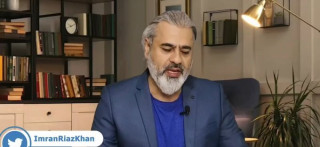than who are these people who claim to be real Aryans. watch this video.
http://www.youtube.com/watch?v=URqN0Iu64D4&feature=related
Read this and be emlightend, to me looks that the video you produced in deprived of truth, read the real facts of Aryan race.
The original 19th-century and early 20th-century use of the term
Aryan referred to "the early speakers of Proto-Indo European and their descendents".[SUP]
[11][/SUP][SUP]
[12][/SUP]
Max Mller is often identified as the first writer to speak of an Aryan "
race" in English. In his
Lectures on the Science of Languagein 1861[SUP]
[13][/SUP] he referred to Aryans as a "race of people". At the time, the term
race had the meaning of "a group of tribes or peoples, an ethnic group".[SUP]
[14][/SUP]
When Mller's statement was interpreted to imply a biologically distinct sub-group of humanity, he soon clarified that he simply meant a line of descent, insisting that it was very dangerous to mix linguistics and anthropology. "The Science of Language and the
Science of Man cannot be kept too much asunder ... I must repeat what I have said many times before, it would be wrong to speak of Aryan blood as of
dolichocephalic grammar".[SUP]
[15][/SUP] He restated his opposition to this method in 1888 in his essay
Biographies of words and the home of the Aryas.[SUP]
[13][/SUP]

Mller was responding to the development of racial anthropology, and the influence of the work of
Arthur de Gobineau who argued that the Indo-Europeans represented a superior branch of humanity. A number of later writers, such as the French anthropologist
Vacher de Lapouge in his book
L'Aryen, argued that this superior branch could be identified biologically by using the cephalic index (a measure of head shape) and other indicators. He argued that the long-headed "dolichocephalic-blond" Europeans, characteristically found in northern Europe, were natural leaders, destined to rule over more "brachiocephalic" (short headed) peoples.[SUP]
[16][/SUP]
The division of the Caucasian race into Aryans, Semites and Hamites is in origin linguistic, not based on physical anthropology, the division in physical anthropology being that into
Nordic,
Alpine and
Mediterranean. However, the linguistic classification of "Aryan" later became closely associated, and conflated, with the classification of "Nordic" among some archaeologists and anthropologists.
This claim became increasingly important during the 19th century. In the mid-19th century, it was commonly believed that the Aryans originated in the southwestern
steppes of present-day
Russia. However, by the late 19th century the steppe theory of Aryan origins was challenged by the view that the Aryans originated in ancient Germany or
Scandinavia, or at least that in those countries the original Aryan ethnicity had been preserved. The German origin of the Aryans was especially promoted by the archaeologist
Gustaf Kossinna, who claimed that the Proto-Indo-European peoples were identical to the
Corded Ware culture of Neolithic Germany. This idea was widely circulated in both intellectual and popular culture by the early twentieth century,[SUP]
[17][/SUP] and is reflected in the concept of "
Corded-Nordics" in
Carleton S. Coon's 1939
The Races of Europe.
Other anthropologists contested such claims. In Germany,
Rudolf Virchow launched a study of
craniometry, which prompted him to denounce "Nordic mysticism" in the 1885 Anthropology Congress in
Karlsruhe, while
Josef Kollmann, a collaborator of Virchow, stated in the same congress that the people of Europe, be they English, German, French, and Spaniard belonged to a "mixture of various races," furthermore declaring that the "results of craniology...[are] against any theory concerning the superiority of this or that European race" to others.[SUP]
[13][/SUP]
Virchow's contribution to the debate sparked a controversy.
Houston Stewart Chamberlain, a strong supporter of the theory of a superior Aryan race, attacked Josef Kollmann arguments in detail. While the "Aryan race" theory remained popular, particularly in Germany, some authors defended Virchow's perspective, in particular
Otto Schrader,
Rudolph von Jhering and the ethnologist
Robert Hartmann (1831–1893), who proposed to ban the notion of "Aryan" from anthropology.[SUP]
[13][/SUP]
Indo-Aryan migration
Main article: Indo-Aryan migration
See also: Out of India theory
Models of the Indo-Aryan migration discuss scenarios of
prehistoric migrations of the early
Indo-Aryans to their historically attested areas of settlement in the northwest of the
Indian subcontinent and from there further across all of
North India. Claims of
Indo-Aryan migration are primarily drawn from
linguistic[SUP]
[18][/SUP] evidence but also from a multitude of data stemming from genetics,[SUP]
[19][/SUP](although more recent genetic studies cast doubt on the certitude of earlier claims),[SUP]
[20][/SUP]
Vedic religion, rituals,
poetics as well as some aspects of social organization and
chariot technology.
All discussion of historical Indo-Aryan migrations or Aryan and
Dravidian races remains highly controversial in India to this day, and continues to affect political and religious debate. Some Dravidians, and supporters of the
Dalit movement, most commonly
Tamils, claim that the worship of
Shiva is a distinct Dravidian religion going back to the
Indus Civilization,[SUP]
[21][/SUP] to be distinguished from
Brahminical "Aryan" Hinduism. In contrast, the Indian nationalist
Hindutva movement argues that no Aryan invasion or migration ever occurred, asserting that Vedic beliefs emerged from the
Indus Valley Civilisation,[SUP]
[22][/SUP] which pre-dated the supposed advent of the Indo-Aryans in India, and is identified as a likely candidate for a
Proto-Dravidian culture.
Some Indians were also influenced by the debate about the Aryan race during the
British Raj. The Indian nationalist
V. D. Savarkar believed in the theory that an "Aryan race" migrated to India,[SUP]
[23][/SUP] but he didn't find much value in a
racialized interpretation of the "Aryan race".[SUP]
[24][/SUP] Some Indian nationalists supported the British version of the theory because it gave them the prestige of common descent with the ruling British class.[SUP]
[25][/SUP]
Genetic studies
A genetic study in the year 2000 in Andhra Pradesh state of India found that the upper caste Hindus were closer relatives to Eastern-Europeans than to Hindus from lower castes.[SUP]
[26][/SUP]
A 2003 report stratifies the population of the Indian subcontinent according to the traditional Aryan-Dravidian divide, finding a relatively closer affinity to Western Eurasians than to southern South

































